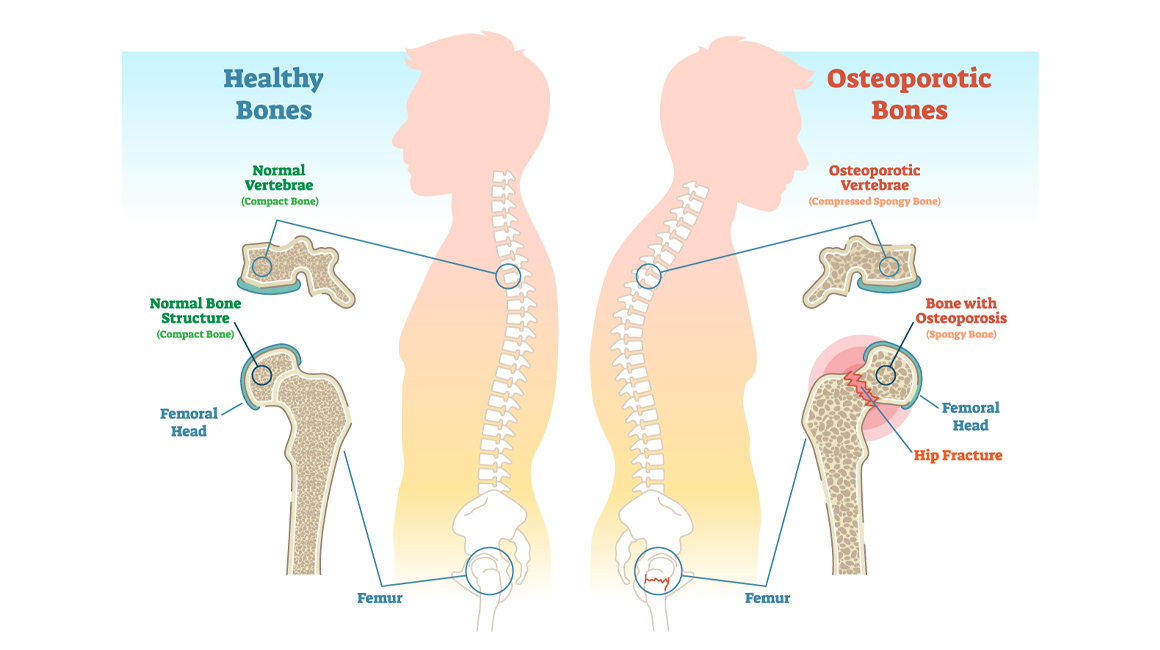
Osteoporosis
Osteoporosis is a condition that affects the bones, causing it to become brittle and weak, which can lead to increased risk of fracture. The most common fractures associated with osteoporosis are in the hip, spine, and wrist. Osteoporosis is known as the “silent disease” because bone deterioration can occur over a number of years without any warning signs.
Symptoms
If symptoms do appear, some of the earlier ones may include sudden onset back pain. Many people with osteoporosis do no’t know they have the condition until they have a fracture, loss of height, or noticeable hump in the upper back. However, if symptoms do appear, some of the earlier ones may include back pain and tooth loss.
Causes
Osteoporosis is more common in:
- Post-menopausal women and elderly men
- Women who go through early menopause before age 45 or who have irregular or missed menstrual periods
- Women who have had their ovaries removed through a hysterectomy
- Women who do not exercise regularly or who exercise so much that menstrual periods stop
- Men with low levels of testosterone
- Individuals who are thin or have small body frames
- Individuals with a family history of osteoporosis
- Individuals of Caucasian or Asian ancestry
- Individuals with a history of bone fractures after a minor injury or fall
- Individuals with systemic lupus erythematosus or an inflammatory arthritis, such as rheumatoid arthritis, psoriatic arthritis or ankylosing spondylitis
- Individuals who take drugs that reduce bone mineral density such as corticosteroids, anticonvulsants (anti-seizure medications), a class of antidepressants known as selective serotonin reuptake inhibitors (SSRIs) or anticoagulants (blood thinners)
- Individuals with celiac disease, inflammatory bowel disease (IBD), hyperthyroidism, chronic obstructive pulmonary disease (COPD), multiple myeloma (bone marrow cancer), thyroid or parathyroid disease
- Individuals who have had bariatric surgery
- Individuals who smoke or drink three or more alcoholic beverages a day
- Individuals with a history of anorexia nervosa or other eating disorders
- Individuals who have had long periods of immobility or bed rest
Treatment
Treatment involves slowing the rate of bone loss or increasing the rate of bone formation. There are two different types of medications for this:
- Antiresorptive medications for slowing the rate of bone loss
- Anabolic medications for increasing the rate of bone formation
Opening Hours
Monday – Thursday: 7:30AM to 4:30PM
Friday: 7:30AM to 3:30PM
Saturday – Sunday: Closed

